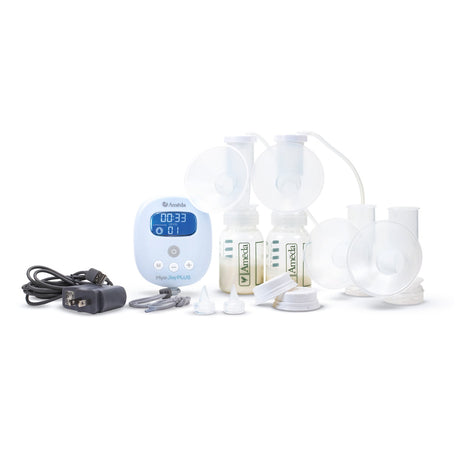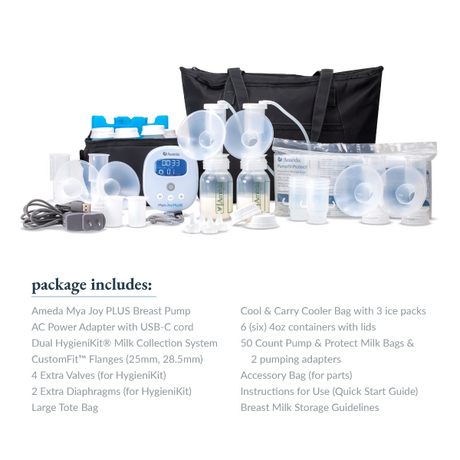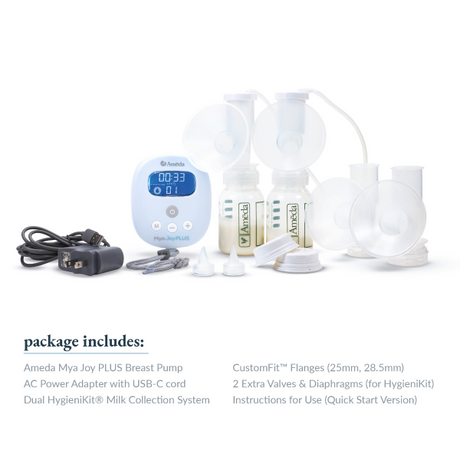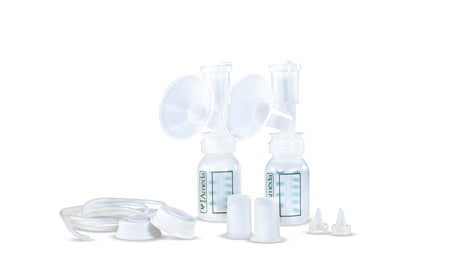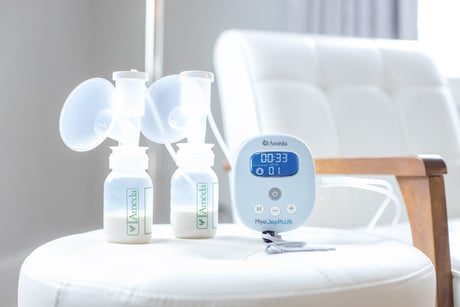Published:
If you’ve never breastfed a baby before, you may not trust that your newborn will get enough nourishment from breast milk alone. After all, there’s no tangible way to measure exactly how much milk your baby is getting at each meal, compared to babies who drink formula from bottles with the ounces marked right on the side. You may worry that you’ll need to do something special to build up your milk supply during the first few months of your baby’s life to ensure that your breasts will make enough milk to exclusively feed your baby.
Fortunately, this isn’t necessary for most women, whose breasts naturally make the right amount of milk for their babies. It is possible, though, to take steps to boost your milk supply, if needed. Read on to find out whether or not you’ll need to build up your milk supply.
Signs that you’re making enough breast milk
It’s true that your breasts don’t measure out how much milk they have dispensed, but breastfed babies aren’t expected to consume a particular amount of breast milk each day. Rather, pediatricians measure other signs that indicate that your baby is getting the right amount of milk on a consistent basis. For example:
- Dirty diapers. Newborns who are getting enough milk have at least 6 wet diapers every day, and they likely will have 3 dirty (poop-filled) diapers each day. If your baby is wet or dirty whenever it’s time to change her diaper, this is a good indication that she’s well-fed.
- Weight gain. Most babies lose a bit of weight during their first few days of life – this is expected. But after your milk comes in, your baby should slowly and surely begin to gain between ½ ounce to 1 ounce each day. Your baby’s pediatrician will check her weight regularly at well visits. If the doctor is concerned that your baby isn’t gaining enough weight, he may ask you to visit the office more frequently so that he can weigh the baby more than is typical, and he may ask questions about whether you’ve been having problems breastfeeding. But if your baby is gaining weight steadily, it’s a good sign that you’re producing enough breast milk.
- Meal times. Your baby will likely breastfeed between 8 and 12 times every day, and each feeding should leave her feeling satisfied for anywhere from 1 to 3 hours. If your baby is meeting these goals and seems full after she nurses, then you’re probably making enough milk.
Pumping to increase your milk supply
Even if all signs suggest that you’re making enough breast milk, you still may want to take steps to ensure that your milk supply is well-established. This may be particularly important to women who are on maternity leave who are expecting to return to work when their babies are 3 months old; these women may want to make sure that their milk supply is optimal early on, because they’re anticipating fewer opportunities to breastfeed their babies when they’re at work.
One way to increase your milk supply is to use your breast pump. You can pump milk as soon as you’d like after your baby is born, but experts recommend against giving your newborn breast milk in a bottle during the first 4 to 6 weeks of her life. Mixing breastfeeding and bottle-feeding may lead to nipple confusion, which may make it harder to establish breastfeeding. This is true even if the baby bottle is filled with breast milk, not baby formula. If you do begin pumping early, you can freeze your breast milk to use when your baby is a bit older.
You can pump milk between feedings to help build up your milk supply, or you can use your breast pump immediately after your baby has eaten. Initially, you may not collect much milk when you pump, but over time, this should change. Most women only need to pump for roughly the same length of time that their babies nurse, which might be 10 to 20 minutes. Be sure to drink water whenever you pump, just like you do when you breastfeed your baby. This can help to build up your milk supply.
Pumping when maternity leave is over
If you haven’t started using your breast pump yet and your maternity leave is nearly over, it’s time to get started. Using your breast pump for at least 1 or 2 weeks before your maternity leave ends can help your body prepare for your return to work, when you’ll pump frequently.
Once you return to work and have fewer breastfeeding sessions with your baby, you may find that your milk supply needs some bolstering. Experts recommend pumping frequently throughout your workday for at least 10 minutes at a time, even if milk doesn’t seem to be flowing from your breasts for the entire 10 minutes. Over time, this habit can help you establish a greater milk supply. It’s also helpful if you pair this practice with frequent breastfeeding sessions – perhaps every 2 or 3 hours – when you’re home with your baby.
How to handle overproduction of breast milk
Sometimes, a woman who’s worried that she isn’t producing enough milk may use her breast pump so frequently, she can create an oversupply of breast milk. Too much milk can cause feeding and digestive problems for babies, and over-full, engorged breasts can feel uncomfortable for moms.
Fortunately, breasts supply milk based on demand. If you cut back on your supplemental pumping sessions, your breasts should follow suit, cutting back on your milk production. In the interim, if your breast feels uncomfortably engorged, you can relieve the pressure by hand-expressing some milk from the sore breast just until it feels better. You can also use your breast pump for this purpose. Whether you use your hand or your pump, be sure not to remove more milk from your breast than is necessary to relieve the uncomfortable pressure, because it can signal your breasts to produce more milk.
DISCLAIMER: Ameda strives to present you with accurate and useful breastfeeding information. This article may contain information and ideas that are not necessarily the views of Ameda. It does not constitute medical advice. If you have any questions please contact your healthcare professional.


